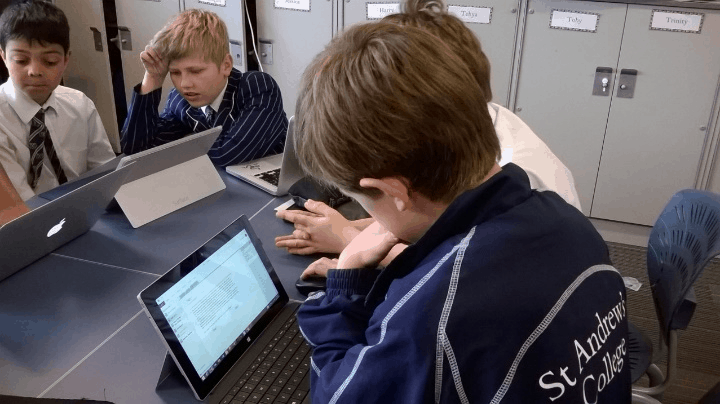According to Creative Strategies’ recent survey of 350 students across 40 different colleges in North America, Microsoft and Google are playing a tentative game of tug-o-war for millennial productivity.
Based on the numbers, millennial age students prefer to collaborate more using Google Docs but choose to operate Microsoft’s Word software for more individually focused workflows.
As Recode points out from their observation of Creative Strategies report
“When students write papers by themselves, only 12 percent use Google Docs. But when students write papers in groups — when they collaborate — 78 percent use Google Docs. On the other hand, 80 percent of students use Microsoft Word for individual work, and 13 percent use it for group work. The dynamic is the same for all Millennials, regardless of gender, the phone they use, or where they live: Microsoft Word for individual work, Google Docs for collaborative work.”
Contrary to some widely held tech industry beliefs, millennials not only know what Microsoft the word is, but understand its place among their productivity needs.

Apparently, when asked about the see-saw use of both Google Docs and Microsoft Word, surveyors were inclined to point to behavioral associate when adapting their workflows. Many believe and embrace the instantaneous gratification provided by the real-time collaboration tools built into Google Docs while also appreciating the feature stack in Microsoft Word that’s afforded to more individualized productivity.
Interestingly enough, is the entrenched use of Microsoft Word with millennials as they continue to join the workforce. The mixed use of Google Docs and Microsoft Office (specifically Word for this case study) is a good and bad sign for the two companies. On the one hand, Google has managed to unseat Microsoft as the defacto productivity software tool in offices and classrooms, but Microsoft has built enough brand cache to remain a player in a new segment of modern educational and employee workflow.

When Microsoft announced Office for the web, it became ever apparent that the company has taken notice of its missteps and mishandling that have enabled Google to gain an edging foothold with millennial workflows. Beyond Creative Strategies survey, Microsoft may have seen that millennials aren’t as loyal as their predecessors. When Office failed to deliver the instantly gratifying tools of collaboration like Google Docs did, Microsoft neglected to keep its wheel of behavioral entrenchment running smoothly.
All is not lost for Microsoft, in fact, the blanket summation of its products seems to be working in its favor. Despite how apt both Google Docs and Microsoft Office are at being individual or collaborative tools, the notion that one is specialized in only one aspect apparently has kept millennials choosing to do personal work using Microsoft Office (Word in particular). Similar to the arguments of freedom vs. viruses that have kept some avid Mac and Windows users from sitting at the same dining table, the common understandings of Google Docs and Microsoft Office keep both productivity suites in use and competition.


